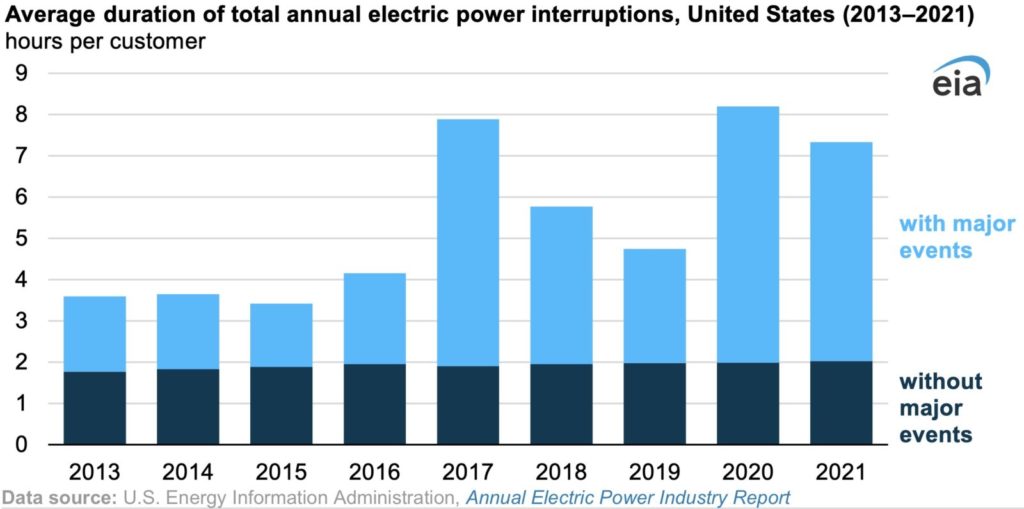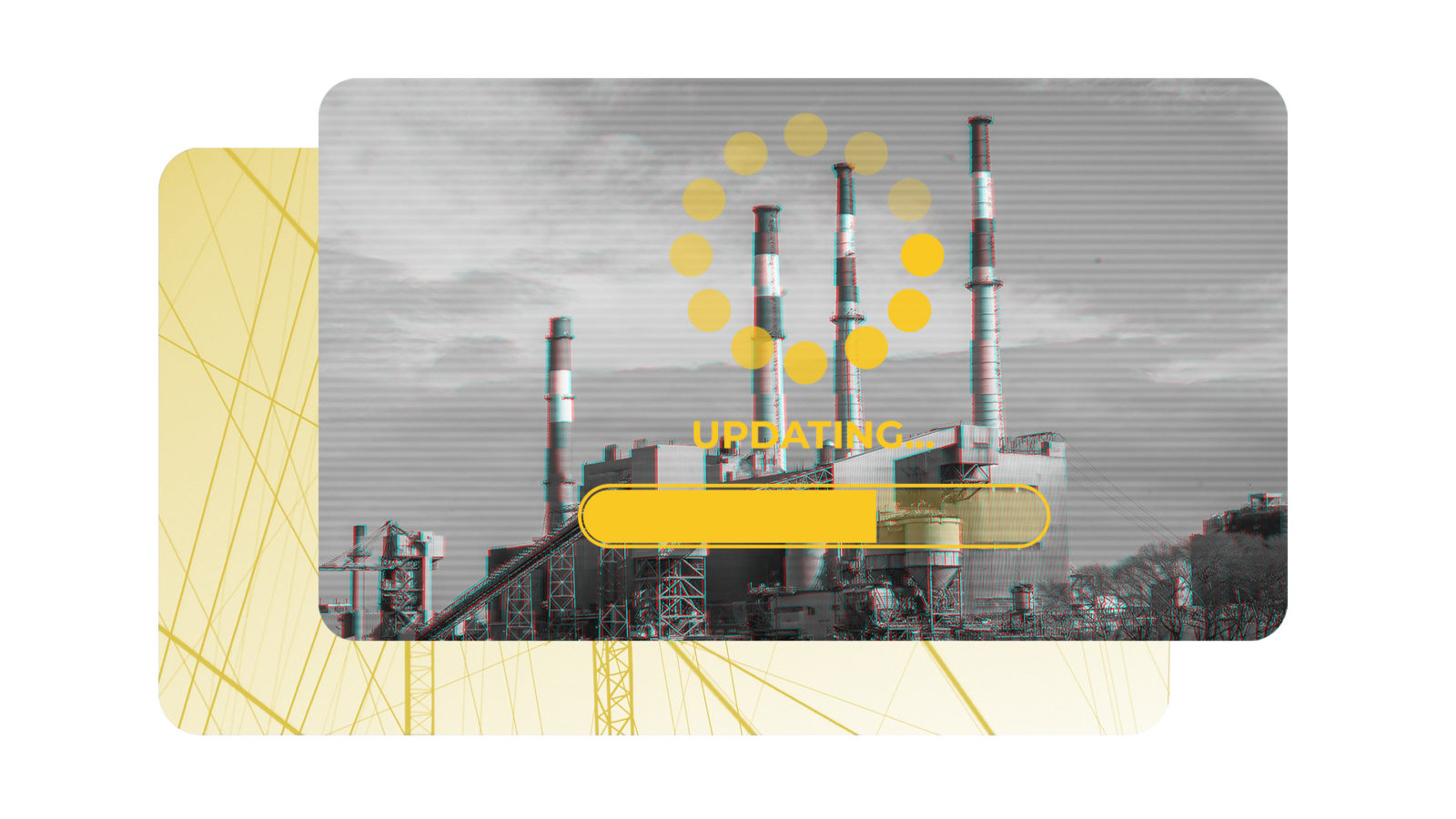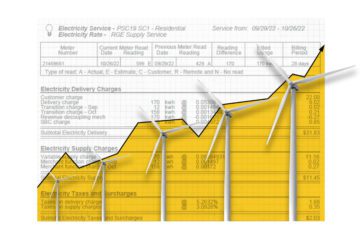Climate XChange’s Dashboard Digest is a deep dive on each of the policies that we track in the State Climate Policy Dashboard and an exploration of how these policies can interact with one another to form a robust policy landscape. The series is intended to serve as a resource to state policy actors who are seeking to increase their understanding of climate policies, learn from experts in each policy area, and view examples of states that have passed model policies. We’re beginning our series by exploring renewable energy and energy storage policies.
The U.S. power grid is outdated. It’s composed of a patchwork of interconnected grids operating at local, state, regional, and national levels — with varying degrees of coordination. It was set up city by city, in a way that made sense at the time, when the goal was to deliver electricity to the masses, but since the first grid was built around New York City in 1882, our country’s power needs have changed dramatically.
Our power grid needs to be modernized in order to meet the energy needs of the future. But, changing how this system works will require new policies, detailed planning, and intense coordination. This process is called “Grid Modernization.”
In this Policy Explainer for our Dashboard Digest article series, we’ll take a look at where our current system is failing, what a modern power grid could look like, and what states can do to support this transition.
Winter Storm Tests Texas' Grid
In February 2021, a major winter storm carried high winds, snow, and extreme cold to states across the country. Many power grids were stressed by the unprecedented conditions, but none as much as Texas, where plunging temperatures caused a spike in energy usage. As many people stayed home and tried to stay warm, they were making unplanned demands on the state’s energy supply. At the same time, the storm froze critical equipment and forced power plants offline.
Electric Reliability Council of Texas (ERCOT), the state’s grid operator, is responsible for ensuring that the state has enough power supply to meet demand, but Winter Storm Uri caused unexpectedly high demand and low supply. Most of the time, states plan to have enough power for when the highest demand is expected — and because Texas usually has mild winters, they plan for the summer when A/Cs are running to combat the heat. Texas is also uniquely vulnerable to outages because ERCOT is unable to import power from surrounding states due to its isolated grid.
When power demand exceeds the grid’s supply, there can be dangerous long-term consequences. As the cold temperatures caused a spike in energy demand while also curtailing the state’s power supply, the imbalance began risking physical damage and cascading outages.
At the time, ERCOT’s only option was to cut off power to homes and businesses across the state. As ERCOT tried to maintain balance, power plants continued to shut down. This dangerous imbalance only lasted a few minutes, but ERCOT officials said that if it had continued for another four and a half minutes, it could have taken weeks to restore power to the whole state. Fortunately, ERCOT’s strategy worked and their power interruptions were sufficient to restore balance to the power grid. By the end of the storm, 69 percent of Texans had gone without power for an average of 42 hours.
This isn’t just a Texas problem. According to the U.S. Energy Information Administration (EIA), the average US customer is spending almost twice the amount of time without power per year than in 2013. Major weather events are the biggest driver of this trend, because outages remain constant when those events are excluded. This is significant because we can expect extreme weather events to become more frequent with climate change

Our grid, as currently built, won’t magically adapt to unpredictable weather and a changing energy system. What it needs is a fundamental re-imagining on how we supply, distribute, and balance our power. We need a flexible grid that can handle the dynamic demands that accompany our renewable transition and the impacts of climate change.
What a Modern Grid Looks Like
The biggest requirement for a modern grid is exactly what the traditional grid lacks the most: flexibility. The traditional grid is rigid, set up for energy produced in a centralized manner and then distributed to customers. But, this system lacks the ability to adjust to unpredictable circumstances and additional expectations of our power grid. We need a grid that has the flexibility to adapt while continuing to supply constant, safe, and affordable electricity.
The following are some modern grid characteristics that can enable a flexible and resilient power supply that supports a transition to renewable energy, adapted from a report from the National Conference of State Legislatures:
Multi-directional flow of energy. Traditionally, grids are set up for energy to flow one way: from power producers to consumers. This made sense when the main goal was to supply power to as many people as possible. Plus, without modern technology like rooftop solar, there wasn’t much need for energy to flow the other way.
Today we’re realizing the important role that distributed energy resources (DERs) will play in decarbonizing the electricity sector. DERs, like rooftop solar and behind-the-meter energy storage, can not only help customers save on their energy bills, but they can be utilized by grid operators to build flexibility into the grid. One emerging technology called Virtual Power Plants aggregates a portfolio of DERs to seamlessly provide energy to the grid during times of peak demand. This way, customers are meaningful players in power generation by helping maintain a more reliable grid.
Smarter customer control systems. In many places, analog electric meters are read just once per month (some months utilities estimate the energy use). This data gives the utility a broad view of how much electricity was used, but the image is fuzzy. Data collected at more frequent intervals, or even in real-time, could present a more useful picture of how customers are using electricity.
This is where advanced metering infrastructure (AMI) comes in, an upgrade already covering nearly half of all meters in the U.S. More detailed data can help influence customers to modify their energy use and potentially result in cost-savings when combined with customer engagement tools, pricing strategies, and incentives. AMI data can also help utilities improve their energy efficiency and demand response, however many aren’t incentivized to do so under current business models.
Upgrades to infrastructure. Current grid infrastructure is aging rapidly and will need to be repaired and replaced with modern technology to keep up with energy demand. In addition to maintenance of the current grid, we simply don’t have enough infrastructure in place to accommodate our country’s future energy needs. A modern grid will not only require more renewable generation, but long transmission lines to bring the power to population centers, and additional distribution infrastructure to connect an increasing amount of distributed customer-sited renewables. All of this will be compounded by the fact that even with energy efficiency measures, our overall power demand will increase as transportation and buildings sectors become more electrified.
Incorporating energy storage. Energy storage presents an exciting opportunity for enhancing grid flexibility, resilience, and overall reliability. Batteries can take in power when supply exceeds demand, and then discharge energy later on when demand is high but the sun isn’t shining on solar panels.
They can also help reduce the need for critical “peaker” plants that run only during periods of the highest demand. Grid operators often opt to use fossil fuels like natural gas for these plants because they need to be instantly available during peak demand, when renewables alone don’t provide that certainty. Energy storage systems can help replace these dirty resources because they can be turned on and off instantaneously to help balance the grid.
Microgrids. Small-scale independent microgrids that can connect to, or disconnect from, the main power grid can help with overall macro-scale flexibility and efficiency. Long distance energy transmission and distribution results in a loss of energy to heat (think hot wires). In a microgrid, energy travels shorter distances, so less of it is lost to the air. Microgrids, like batteries, can also act as cleaner alternatives to peaker plants.
Climate XChange research found that microgrids can also help decrease energy costs to ratepayers by helping to alleviate congestion of transmission lines.
In Massachusetts, every $1 million invested in community microgrids saves $440,000 in energy costs for households and businesses.
Five Things Your State Can do to Support Grid Modernization
No entity has unilateral control over the future of our electric grid, but there are actions that state governments can take to help encourage its modernization.
GridWise Alliance, an electricity industry group, produces periodic rankings of where each state falls in their grid modernization progress. Here are five things that your state can do, adapted from their Grid Modernization Index:
Develop Grid Modernization Plans, Roadmaps, and Targets
An important early step is for states to create grid modernization goals, and develop roadmaps for how they intend to achieve them. Plans can be standalone, or incorporated into the state’s overall energy strategy. Publishing a plan has numerous benefits for grid modernization. Detailed research and analysis can lead to higher quality policies, and ensure that all government entities are aligned with action items. Plans also ensure that other economic sectors, like buildings and transportation, support and are supported by grid modernization.
Additionally, targets and strategies signal a state’s commitment to grid modernization, which helps foster long-term certainty in clean energy markets. This certainty can attract additional investment in the state’s grid from the private sector.
States can also require that electric utilities incorporate grid modernization into their planning. Many Public Utility Commissions require utilities to engage in long-term planning processes to ensure they are able to meet the predicted demand for energy. States can amend planning procedures to require that utilities incorporate grid modernization measures as a way to meet energy demand.
Create Resilience and Security Plans
Extreme weather events, like hurricanes, tornadoes, and wildfires are expected to increase in frequency as the planet warms and will continue to disrupt grid operations. States can create resiliency plans for how they intend to handle impacts on the grid resulting from climate change. Additionally, states can incentivize utilities and owners of critical grid infrastructure to improve their climate resiliency, or use penalties for failing to do so.
Grid operators are also responsible for maintaining a secure power grid, one that’s able to provide constant, reliable electricity. Keeping the widespread power grid safe is a major task, and as threats evolve, so should our security measures. Just last year, the U.S. power grid saw the highest number of attacks in a decade, and it’s imperative that grid operators have plans for how to address these threats. States can require utilities to produce plans for how they intend to modernize security for grid infrastructure.
Invest in Workforce Development
It takes a lot of specialized labor to transform our grid. As states modernize our aging grid system, they must include workforce development strategies in their long-term planning. Fossil-fuel intensive components of the power grid must be replaced by renewables, and states should prioritize actions that bolster local economies such as retraining, education, and equitable hiring.
Optimize Grid Policies
States can put policies and regulations in place that enable the economic viability of DERs. In order to maximize DERs, it’s important that they are competitive to alternative traditional grid solutions. There is a wide range of policies that can encourage investment in renewables and grid modernization, and states can use a policy stacking approach to ensure that they are building a market with strong foundations.
States can also investigate how to use DER currently in place to handle peak demand, optimize reliability, and save money when compared with other solutions. Rethinking electricity pricing systems can better utilize DERs for some grid support strategies. For example, many customers pay flat electricity rates throughout the day, even though demand is higher during evening hours — the same time when supply from DER generation starts to decrease. Depending on a state’s goals, pricing can be restructured to better reflect the value of energy depending on the time of the day and demand.
Incentivizing Cost Recovery Mechanisms and State Investment
States should make clear how utilities can recover the cost of investing in grid modernization in a way that incentivizes investment, but maintains service affordability. Traditionally, utilities profit by building capital projects, like transmission lines and power plants, and then recovering their cost by maximizing energy sales. This approach has many downsides for the ratepayer, but a glaring one is that it disincentivizes energy efficiency — lower energy demand means lower sales.
In order to incentivize utilities to invest in grid modernization strategies including energy efficiency programs, advanced metering, and DER platform services, states need to make it clear how they will be compensated. One approach to this challenge is to create new streams of revenue through Performance Incentive Mechanisms (PIMs). PIMs can reward utilities for meeting predetermined energy goals and offer an alternative to the traditional business model.
Apart from relying on incentivizing utility investment, states can invest their own money into grid modernization. These can include grid modernization funds, like the Clean Energy Fund in Washington, which awarded almost $4 million in 2021 to projects across the state. Other states fund specific grid modernization solutions, like Connecticut’s Microgrid Grant and Loan Program which has awarded over $36 million to fund projects that support development of DERs for critical infrastructure like hospitals, fire stations, and public shelters.
State Example
California
California continues to lead in clean energy policy and made recent strides in grid modernization through both the legislature and the state’s Public Utility Commission (CPUC). In recent years, the state has taken legislative and regulatory actions to support microgrids, and published an updated plan to implement DERs.
In 2018, the legislature passed SB 1339 which directed CPUC, the California Energy Commission, and the California Independent System Operator, to further develop policies related to microgrids in the state. In 2021, CPUC issued a decision on microgrid and resiliency solutions to enhance summer 2022 and 2023 reliability. The decision required Pacific Gas & Electric to consider expanding a program designed to mitigate any anticipated shortfall of system capacity in summer 2022, when high temperatures usually lead to a spike in energy usage.
The decision also authorized the San Diego Gas & Electric Company to develop 40 MW of energy storage microgrid projects and suggested that Los Angeles County propose their own microgrid projects.
Separately, CPUC approved $200 million for a statewide Microgrid Incentive Program to support communities that are most vulnerable to impacts from power outages. The program’s goal is to increase reliability for communities that are at higher risk of outages, critical infrastructure like fire stations, schools, and nursing homes, and reducing overall greenhouse gas emissions. The program concept was approved in 2021, but the design and implementation details need to be finalized and it’s intended to launch in 2023.
In 2022, CPUC updated its DER Action Plan which was originally published in 2016. Version 2.0’s goal is to ensure that CPUC’s DER policies support the state’s overall goal of net zero by 2045 and align actions across the agency. The plan addresses four aspects of grid modernization: Load flexibility and rate structures, grid infrastructure, market integration, and customer programs.
Last summer, California was able to avoid rolling blackouts during a heat wave despite a record demand for electricity, in part because of their grid modernization efforts. The state added 4,000 megawatts of renewable energy to the grid in the previous two years, but there remains much more to do. It’s important that California continues to increase their resiliency as the state is particularly vulnerable to heat, wildfires, and flooding — hazards that will worsen with climate change.






